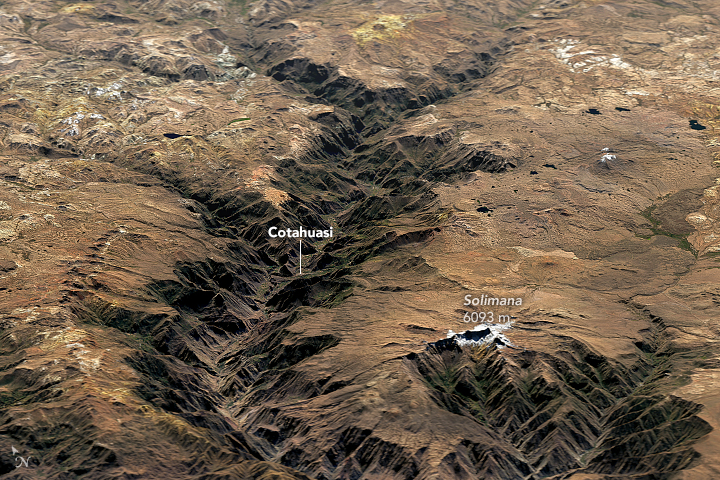Rikcha:Cotahuasi Canyon oblique.jpg
Cotahuasi_Canyon_oblique.jpg (720 × 480 iñu; willañiqip chhikan kaynin: 515 kB; MIME laya: image/jpeg)
Willañiqip wiñay kawsaynin
P'unchaw/pacha nisqapi ñit'iy chaypacha willañiqi kachkasqata qhawanaykipaq.
| P'unchaw/Pacha | Uchuylla rikchacha | Chhikanyachikuqkuna | Ruraq | Willapuy | |
|---|---|---|---|---|---|
| kunan | 22:59 13 phi 2018 |  | 720 × 480 (515 kB) | Tillman | {{Information |Description ={{en|1=Cotahuasi Canyon in Peru stands as a potent reminder of the tremendous erosive power of water and ice. Cutting through a towering plateau—a product of repeated volcanic eruptions and tectonic uplift—the canyon... |
Maypim willañiqita llamk'achinku
Kay rikchamanqa kay qatiq p'anqam t'inkimun:
Mayqin wikikunapi willañiqita llamk'achinku
Kay wakin wikikunam willañiqitaqa llamk'achinku:
- en.wikipedia.org-pi kaykunapi llamk'achinku
- es.wikipedia.org-pi kaykunapi llamk'achinku
- fr.wikivoyage.org-pi kaykunapi llamk'achinku
- he.wikivoyage.org-pi kaykunapi llamk'achinku
- it.wikivoyage.org-pi kaykunapi llamk'achinku
- pl.wikipedia.org-pi kaykunapi llamk'achinku
- ru.wikipedia.org-pi kaykunapi llamk'achinku
- sv.wikipedia.org-pi kaykunapi llamk'achinku
- uk.wikipedia.org-pi kaykunapi llamk'achinku
- www.wikidata.org-pi kaykunapi llamk'achinku


